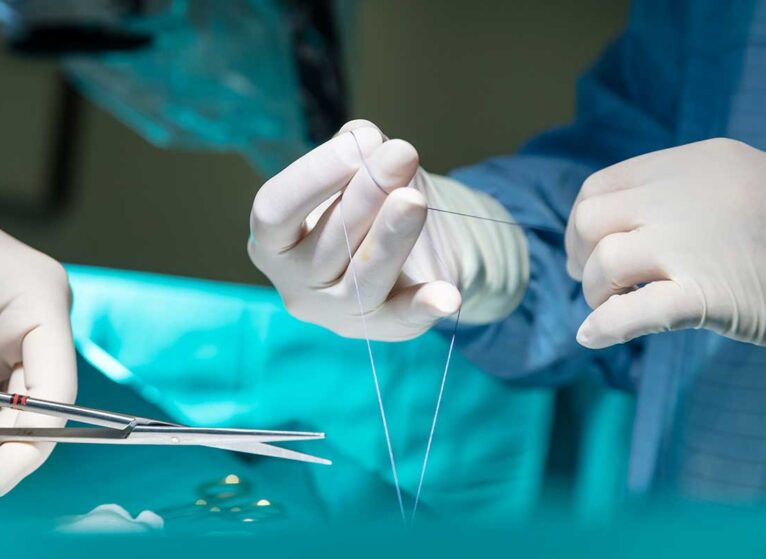Let’s be real: nobody wants to hear the words, “You’re going to need stitches.” But cuts happen. Whether from a kitchen mishap, a bike crash, or something way less glamorous, sometimes your body needs a little extra help closing things up.
The good news? Stitches aren’t one-size-fits-all. Doctors have a few different tricks up their sleeves to help your skin heal safely, with as little scarring as possible.
Stitches vs Sutures: What’s the Difference?
You’ve probably heard people say “stitches” and “sutures” like they mean the same thing. Technically, sutures are the medical threads used to sew skin together, and stitches are the actual loops or ties made with the thread.
Types of Stitches (and Why It Matters)
Doctors don’t just grab any old thread and needle. They use specific materials depending on where your wound is and how deep it goes.
“Sutures are dissolvable and non-dissolvable,” says Naghmeh Pirsaharkhizlangroudi, MD, a surgeon at UVA Health.
- Dissolvable stitches consist of special materials that your body breaks down on its own
- Non-dissolvable stitches need to be removed by a provider once your wound has healed.
Each type has pros and cons, and your doctor chooses based on the wound’s location, tension, and risk of infection.
Non-dissolvable stitches are made of nylon and silk. “For skin wounds though, we never use silk,” notes Pirsaharkhizlangroudi.
But Wait — What About Staples or Glue?
- Staples: Yep, actual medical staples. They’re fast, strong, and often used for scalp wounds or big cuts where speed matters (like in the ER).
- Skin glue: Basically a medical-grade super glue that holds the edges of small, clean cuts together. It’s quick, painless, and disappears on its own. You can buy some at the local pharmacy.
When Do You Need Stitches?
Not every cut needs a trip to the ER. A few signs you probably do need stitches:
- The cut is deep, gaping, or longer than half an inch.
- It keeps bleeding even after applying pressure.
- You can see fat, muscle, or bone.
- It’s on your face, where scarring is a concern.
If it’s shallow and stops bleeding on its own, you might be able to clean it, bandage it, and let it heal without stitches.
When Do You Need the ER?
Sometimes it's hard to tell when you need to go.
What If You Skip Stitches?
Leaving a deep cut open can slow down healing, increase scarring, and raise your risk of infection. Long-term problems can arise if the wound doesn’t close properly.
Can You Just DIY With a Sewing Needle?
No. A regular needle and thread (like the kind in your sewing kit) aren’t sterile, aren’t designed for skin, and could cause a nasty infection. A real suture needle is curved, sterile, and made for medical use. Please leave this one to the pros.
Can Stitches Stay In Too Long?
Yep. If non-dissolvable stitches are left in too long, they can leave extra scarring or even get embedded in the skin. That’s why doctors usually schedule a removal appointment within a week or two, depending on the location of the wound.
Bottom line: Whether it’s dissolvable stitches, nylon suture, silk suture, or even staples, the goal is always to help your skin heal quickly and cleanly. If you’re not sure whether a cut needs stitches, get it checked out.

